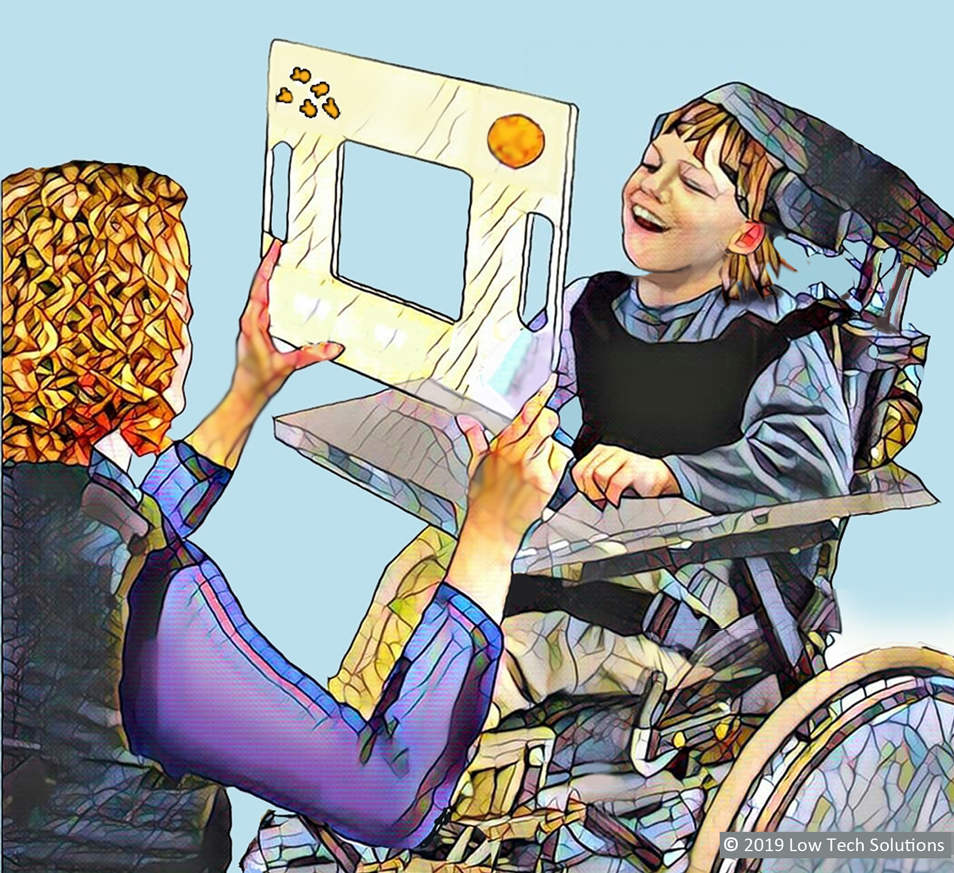Modeling

MODELING
NOTE:
This page is geared towards the child who is new to using the E-TRAN, and who doesn't understand picture symbols yet. Some children may grasp the idea of the board and picture symbols right away, and may not require this level of instruction.
This is an example only. Using food may not be appropriate for some children. Replace using a cookie with whatever item is engaging to the child.
Model the activity so that the child knows what they are supposed to do.
a. Let the child see you sticking objects on the frame. (For example, a cookie in one top corner, and some gold fish crackers in the other corner.)
b. Turn the E-TRAN around so that the objects are facing you. The child should be able to see the objects through the plexiglass.
c. Make eye contact with the child, through the frame.
d. Say you are hungry, and you are going to pick your snack.
e. Slowly look up toward the item you want, and stare at it fixedly for a few seconds.
“Hmm. I want goldfish crackers”.
e. Take some goldfish crackers off the board and eat them.
The child's turn to try:
a. Turn the board, so that the snacks/objects are facing the child. Ask:
“What do you want for your snack?”
b. Check that the child is looking at you (full eye contact, if possible), then slowly move your gaze from the child’s eyes up to the item they have selected on the E-TRAN.
c. Look fixedly at the item for a few moments. Then say:
“I’ve found the (cookie). Here you are!”
d. Take the cookie off the E-TRAN, give it to the child and let them eat some.
Continued Modeling
It may be necessary to model the E-TRAN board several times with different objects/games.
In this example, we have taped some actual objects to the board, a small toy car and a small teddy bear.
a. “Hmmm… Do I want to play with the teddy bear (look at the teddy bear), or the car? (Look at the car).
Teddy bear? (Look at the teddy bear), or the car? (Look at the car).
I’m going to pick the teddy bear!“
b. Look at the teddy bear fixedly, then take it down.
c. Spend some time playing with the teddy bear and the child.
Continued on First Steps
If you wish to use/reproduce any of the images on this website
